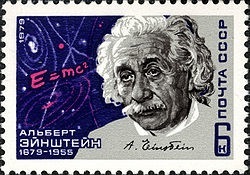Mechanics, Relativity and
Quantum Mechanics

Mechanics, Relativity and
Quantum Mechanics

2010-2011
Lecture Notes
Students are strongly encouraged to keep their own set of notes during the lectures. Links to lecture notes will become available as the course progresses below:
Lecture notes 1.1 Lecture notes 2.1
Lecture notes 1.2 Lecture notes 2.2
Lecture notes 1.3 Lecture notes 2.3
In addition these undergraduate lecture notes on classical mechanics may be useful:
Past Exams
While much of the following exam papers will be familiar to our course, there will of course be some difference in the notation used and some of the material covered. Students are advised to use their discretion when working through the papers:
IMPORTANT NOTICE: The rubric on this year’s paper will differ from that of past papers and will read
“ALL QUESTIONS CARRY EQUAL MARKS. FULL MARKS WILL BE AWARDED FOR COMPLETE ANSWERS TO FOUR QUESTIONS. ONLY THE BEST FOUR QUESTIONS WILL COUNT TOWARDS GRADES A OR B, BUT CREDIT WILL BE IVEN FOR ALL WORK DONE FOR LOWER GRADES.”
Reading List
There is a vast amount of literature relevant to the material covered in this course and students are encouraged to seek out the books which are most useful to them personally. However the recommended texts for the course are:
1.H. F. Jones, Groups, Representations and Physics (2nd edition)
2.H. Goldstein, C. Poole and J. Safko, Classical Mechanics (3rd edition)
3.S. Gasiorowicz, Quantum Physics
The texts above include material that will also go beyond the scope of the course.
The following texts are not recommended for the course but are very good books that the present course might encourage you to investigate. If you are interested in more advanced group theory which extends the topics discussed in the course Brian C. Hall’s excellent text Lie Groups, Lie Algebras, and Representations - An Elementary Introduction, as well as Robert A. Wilson’s The Finite Simple Groups are recommended. For extra-curricular relativity why not browse Sean A. Carroll’s Spacetime and Geometry - an Introduction to General Relativity and to go beyond quantum mechanics Anthony Zee’s Quantum Field Theory in a Nutshell is highly enjoyable.
This course is an introduction to the theoretical physics MSc and is taught
intensively in the first two weeks of the first semester only. The aim of the
course is to refresh and standardise the knowledge of topics essential to the theoretical physics MSc programme. The course will be assessed by a two-hour exam in January, 2011.
The subjects covered may be broadly split into topics in group theory and topics in classical and quantum mechanics.
Group theory is an exquisitely beautiful subject which is at the core of modern theoretical physics. This course will introduce the basics of group theory, starting from the definition of a group and moving through examples of both finite and continuous groups we will probe the essential structures and representations of symmetries in physics. Topics covered include groups of low order, cosets, the classical groups, normal groups, conjugacy classes, representations of groups, irreducibility, simple groups, Schur’s Lemma, group homomorphisms, the Lorentz group, Einstein’s special theory of relativity, four vectors and Lorentz tensors.
Lecturer: Dr. Paul P. Cook
Classes (weeks 1 and 2 only):
Mondays 11am-1pm, room K0.18
Tuesdays 1pm-3pm, room S(-1).29
Wednesdays 9am-11am, room K0.19
Fridays 1pm-3pm, room K2.41
Revision class:
Friday 10th December 4pm-6pm, S3.31
Problem Sheets
Some suggested problems (and eventually their solutions) to try over the duration of the course and after will appear here as the course develops.
Problem sheet 1 (Solutions 1) Problem sheet 5 (Solutions 5)
Problem sheet 2 (Solutions 2) Problem sheet 6 (Solutions 6)



”The career of a young theoretical physicist consists of treating the harmonic oscillator in ever-increasing levels of abstraction.”
Sidney Coleman in his QFT lectures at Harvard (available to watch online).
Essential to any theoretical physicist’s armoury is an understanding of mechanics. In the second part of this course we will present both classical and quantum mechanics. Topics covered include the action principle, Lagrangian dynamics, Hamiltonian mechanics, Noether’s theorem, quantisation of classical systems, Hilbert spaces, observables, the Schrodinger equation, the Schrodinger picture, the Heisenberg picture and the quantisation of the harmonic oscillator.
